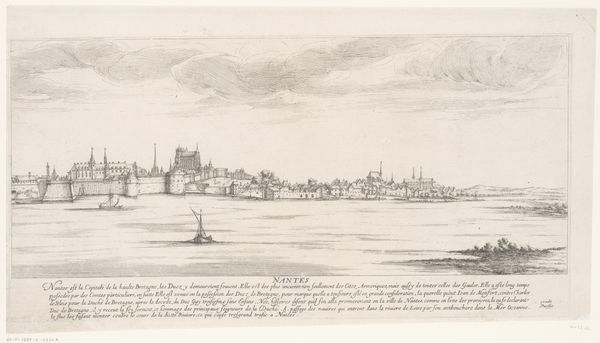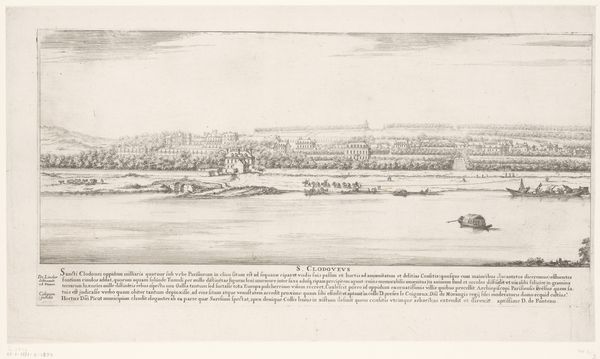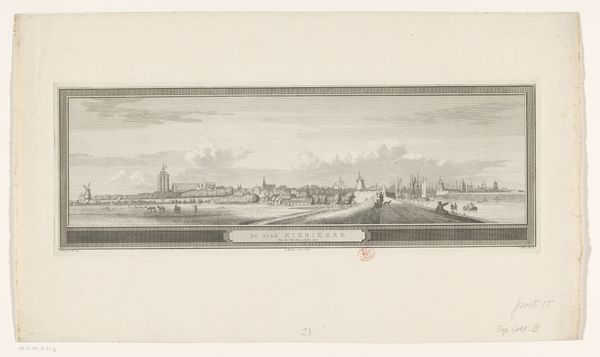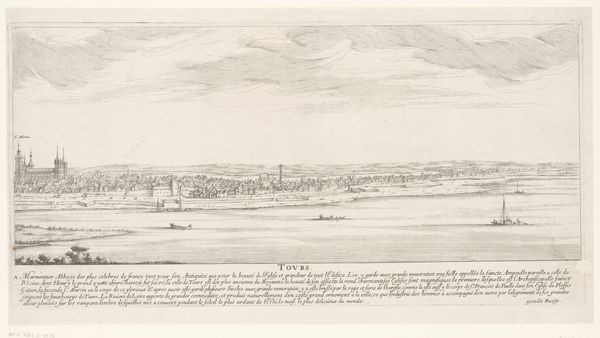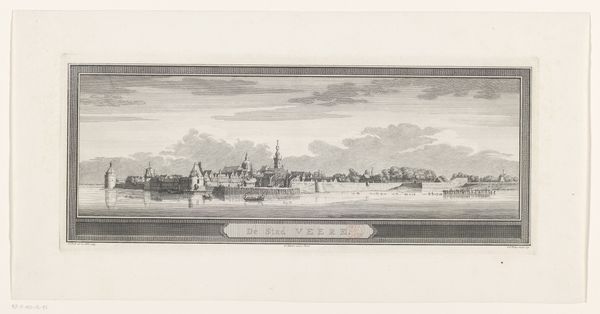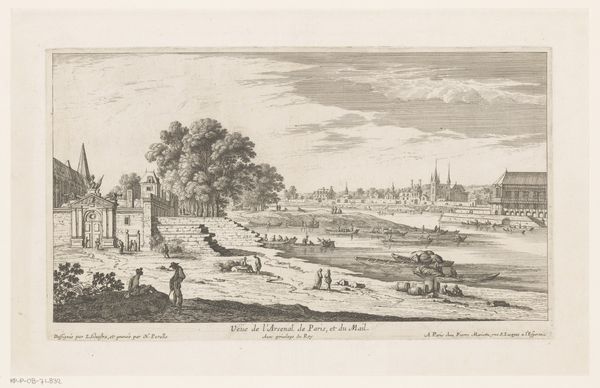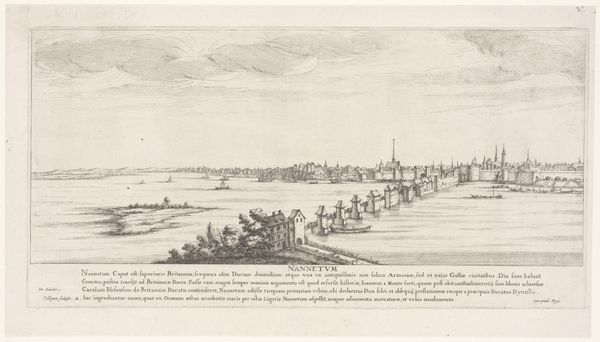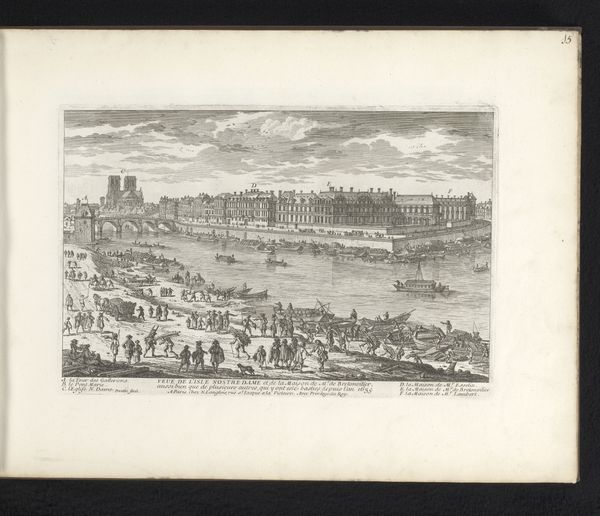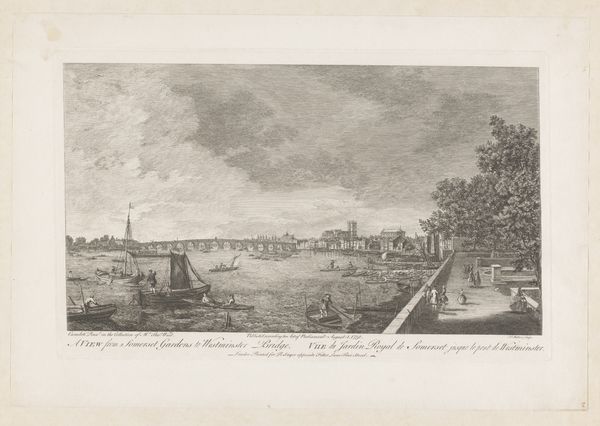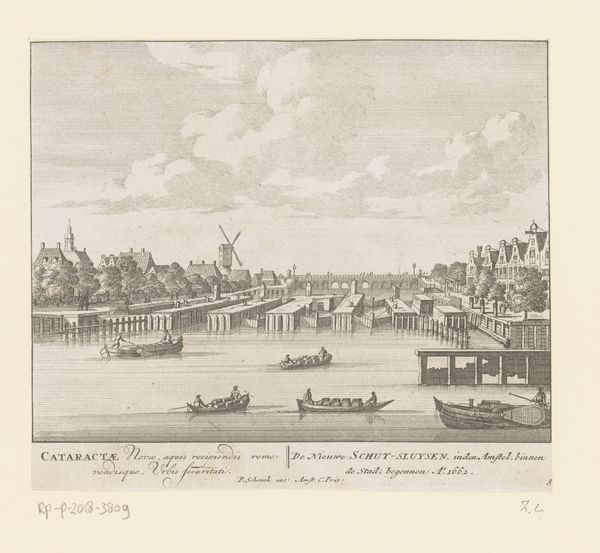
print, engraving
#
baroque
# print
#
landscape
#
river
#
line
#
cityscape
#
engraving
Dimensions: height 207 mm, width 417 mm
Copyright: Rijks Museum: Open Domain
Curator: At first glance, it's almost melancholic, wouldn't you agree? The pale wash of the engraving lends itself to a somewhat dreamlike perspective of the town. Editor: Indeed, there is a certain stillness. We are viewing "Zicht op Saumur," an engraving made between 1620 and 1687, showing a landscape view. Its maker is François Collignon, a somewhat underrecognized master of this type of serene baroque cityscape. What social circumstances do you believe encouraged the making of such imagery, especially during this specific time period? Curator: During the 17th century, views of cities such as this became fashionable. Not only was it considered the scientific approach to catalogue settlements and locations but an increased public awareness about their civic environments spurred a market. Collignon capitalizes on the visual appetite of the burghers, the rising merchant class who purchased the vast majority of prints. In his line work, he imbues symbolic associations such as order, economic and civic prosperity. Editor: I see the appeal for sure. Those sturdy bridge and buildings give off stability as well as opportunity for enterprise. But aren’t those delicate clouds also invoking a subtle symbol of the fleeting nature of power, the impermanence of human endeavors? Even in this landscape so rich in its own built world there exists a call back to the ephemeral reality of living. Curator: The image does not shy away from illustrating nature with precision and charm, suggesting an ordered existence that has both divine grace and human-driven fortitude. But even considering the rising social and political anxieties during this time period in Europe, it seems natural that artists also capture visual language related to resilience, perseverance, and collective power. After all, the act of living during these periods demanded a sense of optimistic resilience that sustained a civic identity under threat. Editor: That interplay is certainly compelling. By revealing the city and its surroundings so seamlessly, and in its formal symbolic content, the picture conveys not just what it means to view the place, but to dwell in it—a form of place-belonging in image-form, wouldn't you say? Curator: Exactly. Through Collignon's work, we gain access not just to a place but a symbolic matrix that highlights enduring visual themes: hope, enterprise, and perhaps the simple act of place making.
Comments
No comments
Be the first to comment and join the conversation on the ultimate creative platform.
